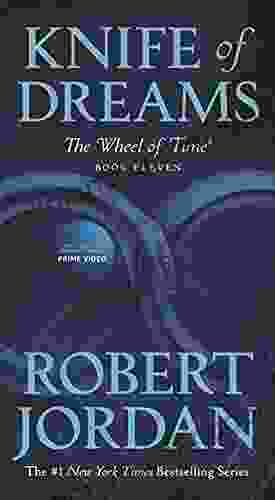An Evolution of Strings: A Comprehensive Guide to the History of Violin Family Strings

5 out of 5
| Language | : | English |
| File size | : | 21314 KB |
| Screen Reader | : | Supported |
| Lending | : | Enabled |
| Print length | : | 47 pages |
The violin, viola, and cello are among the most beloved and versatile instruments in the world. Their rich, expressive sound has captivated audiences for centuries, and it is largely due to the strings that these instruments produce such beautiful music.
The history of violin family strings is a long and fascinating one, dating back to the early days of stringed instruments. The first strings were made of gut, and they were used on instruments such as the rebec and the vielle. Gut strings were relatively inexpensive and easy to produce, but they were also prone to breaking and stretching. As a result, musicians began to experiment with other materials, such as metal and silk.
In the 18th century, the invention of the steel string revolutionized the sound of the violin. Steel strings are much more durable than gut strings, and they produce a brighter, more powerful sound. Steel strings quickly became the standard for violinists, and they are still used on most violins today.
In the 19th century, the invention of the synthetic string further improved the sound of the violin. Synthetic strings are made of materials such as nylon and polyester, and they offer a number of advantages over gut and metal strings. Synthetic strings are more durable, they are less prone to stretching, and they produce a warmer, more mellow sound. Synthetic strings are now widely used on all members of the violin family.
The Different Types of Violin Family Strings
There are three main types of violin family strings: gut strings, metal strings, and synthetic strings.
- Gut strings are made from the intestines of animals, such as sheep or cows. Gut strings have a warm, mellow sound, and they are often used on period instruments. However, gut strings are also more fragile than metal or synthetic strings, and they are more prone to breaking and stretching.
- Metal strings are made from steel or other metals. Metal strings have a brighter, more powerful sound than gut strings. They are also more durable, and they are less prone to breaking and stretching. Metal strings are the most common type of string used on modern violins, violas, and cellos.
- Synthetic strings are made from materials such as nylon and polyester. Synthetic strings have a warm, mellow sound that is similar to gut strings. However, synthetic strings are also more durable than gut strings, and they are less prone to breaking and stretching. Synthetic strings are a popular choice for musicians who want the sound of gut strings with the durability of metal strings.
The Construction of Violin Family Strings
Violin family strings are made from a variety of materials, including gut, metal, and synthetic fibers. The core of the string is made from a single strand of material, and the outer windings are made from a different material. The core material determines the sound of the string, while the winding material affects the durability and playability of the string.
Gut strings are made from the intestines of animals, such as sheep or cows. Gut strings have a warm, mellow sound, and they are often used on period instruments. However, gut strings are also more fragile than metal or synthetic strings, and they are more prone to breaking and stretching.
Metal strings are made from steel or other metals. Metal strings have a brighter, more powerful sound than gut strings. They are also more durable, and they are less prone to breaking and stretching. Metal strings are the most common type of string used on modern violins, violas, and cellos.
Synthetic strings are made from materials such as nylon and polyester. Synthetic strings have a warm, mellow sound that is similar to gut strings. However, synthetic strings are also more durable than gut strings, and they are less prone to breaking and stretching. Synthetic strings are a popular choice for musicians who want the sound of gut strings with the durability of metal strings.
The Playing Styles of Violin Family Strings
The playing style of a violin family string can greatly affect the sound of the instrument. There are three main playing styles: arco, pizzicato, and col legno.
- Arco is the most common playing style for violin family instruments. In arco playing, the bow is drawn across the strings, producing a smooth, sustained sound. Arco playing can be used to play a wide variety of musical styles, from classical to jazz.
- Pizzicato is a playing style in which the strings are plucked with the fingers. Pizzicato playing produces a short, percussive sound. Pizzicato playing is often used in folk and world music.
- Col legno is a playing style in which the bow is used to strike the strings. Col legno playing produces a harsh, metallic sound. Col legno playing is often used in contemporary music.
The Evolution of Violin Family Strings
The history of violin family strings is a long and fascinating one. From the early days of gut strings to the modern synthetic strings, the evolution of strings has been driven by the desire for better sound, durability, and playability. Today, there is a wide variety of strings available to violin family musicians, and each type of string has its own unique sound and playing characteristics.
The evolution of violin family strings is ongoing, and it is likely that new and innovative strings will continue to be developed in the years to come. As the sound of the violin family continues to evolve, so too will the strings that produce it.
5 out of 5
| Language | : | English |
| File size | : | 21314 KB |
| Screen Reader | : | Supported |
| Lending | : | Enabled |
| Print length | : | 47 pages |
Do you want to contribute by writing guest posts on this blog?
Please contact us and send us a resume of previous articles that you have written.
 Top Book
Top Book Novel
Novel Fiction
Fiction Nonfiction
Nonfiction Literature
Literature Paperback
Paperback Hardcover
Hardcover E-book
E-book Audiobook
Audiobook Bestseller
Bestseller Classic
Classic Mystery
Mystery Thriller
Thriller Romance
Romance Fantasy
Fantasy Science Fiction
Science Fiction Biography
Biography Memoir
Memoir Autobiography
Autobiography Poetry
Poetry Drama
Drama Historical Fiction
Historical Fiction Self-help
Self-help Young Adult
Young Adult Childrens Books
Childrens Books Graphic Novel
Graphic Novel Anthology
Anthology Series
Series Encyclopedia
Encyclopedia Reference
Reference Guidebook
Guidebook Textbook
Textbook Workbook
Workbook Journal
Journal Diary
Diary Manuscript
Manuscript Folio
Folio Pulp Fiction
Pulp Fiction Short Stories
Short Stories Fairy Tales
Fairy Tales Fables
Fables Mythology
Mythology Philosophy
Philosophy Religion
Religion Spirituality
Spirituality Essays
Essays Critique
Critique Commentary
Commentary Glossary
Glossary Bibliography
Bibliography Index
Index Table of Contents
Table of Contents Preface
Preface Introduction
Introduction Foreword
Foreword Afterword
Afterword Appendices
Appendices Annotations
Annotations Footnotes
Footnotes Epilogue
Epilogue Prologue
Prologue Patricia Haverton
Patricia Haverton Quentin Tarantino
Quentin Tarantino H B Barstrum
H B Barstrum Adrienne Woods
Adrienne Woods Cal Newport
Cal Newport A M Van Dorn
A M Van Dorn Allie Burke
Allie Burke M V Kasi
M V Kasi Naomi Alderman
Naomi Alderman Lawrence A Cunningham
Lawrence A Cunningham Beatrix Potter
Beatrix Potter Jennifer Lang Md
Jennifer Lang Md Ellen Goodlett
Ellen Goodlett Craig Lehoullier
Craig Lehoullier Cornell Bunting
Cornell Bunting Kirsten Kirby
Kirsten Kirby Jeffrey A Lee
Jeffrey A Lee Nathanael Kuipers
Nathanael Kuipers Hinemoana Baker
Hinemoana Baker Vicki Feaver
Vicki Feaver
Light bulbAdvertise smarter! Our strategic ad space ensures maximum exposure. Reserve your spot today!

 Robert Louis StevensonAn Anthology Dedicated to the Voices of Queer Poets of Color: A Journey into...
Robert Louis StevensonAn Anthology Dedicated to the Voices of Queer Poets of Color: A Journey into... George R.R. MartinFollow ·6.8k
George R.R. MartinFollow ·6.8k Shawn ReedFollow ·3.6k
Shawn ReedFollow ·3.6k Allan JamesFollow ·17.1k
Allan JamesFollow ·17.1k Ken SimmonsFollow ·6k
Ken SimmonsFollow ·6k Gavin MitchellFollow ·9.9k
Gavin MitchellFollow ·9.9k Mitch FosterFollow ·7.4k
Mitch FosterFollow ·7.4k Dean ButlerFollow ·4.7k
Dean ButlerFollow ·4.7k Luke BlairFollow ·3.1k
Luke BlairFollow ·3.1k

 David Peterson
David PetersonUnveiling Eleven of the Wheel of Time: A Journey Through...
In the vast and intricate...

 Curtis Stewart
Curtis StewartEbony Jay Rice: A Rising Star in the Entertainment...
Ebony Jay Rice is a force to be reckoned...

 Matt Reed
Matt ReedNavigating Mental Health with Science: Overcoming...
Mental health is an integral part of...

 Guillermo Blair
Guillermo BlairFormer Magistrate's Poetic Reflections on Love and...
In the hallowed halls...

 Corey Green
Corey GreenOf the Dead: William Burroughs' Post-Beat Masterpiece
William S. Burroughs' Of the...
5 out of 5
| Language | : | English |
| File size | : | 21314 KB |
| Screen Reader | : | Supported |
| Lending | : | Enabled |
| Print length | : | 47 pages |












